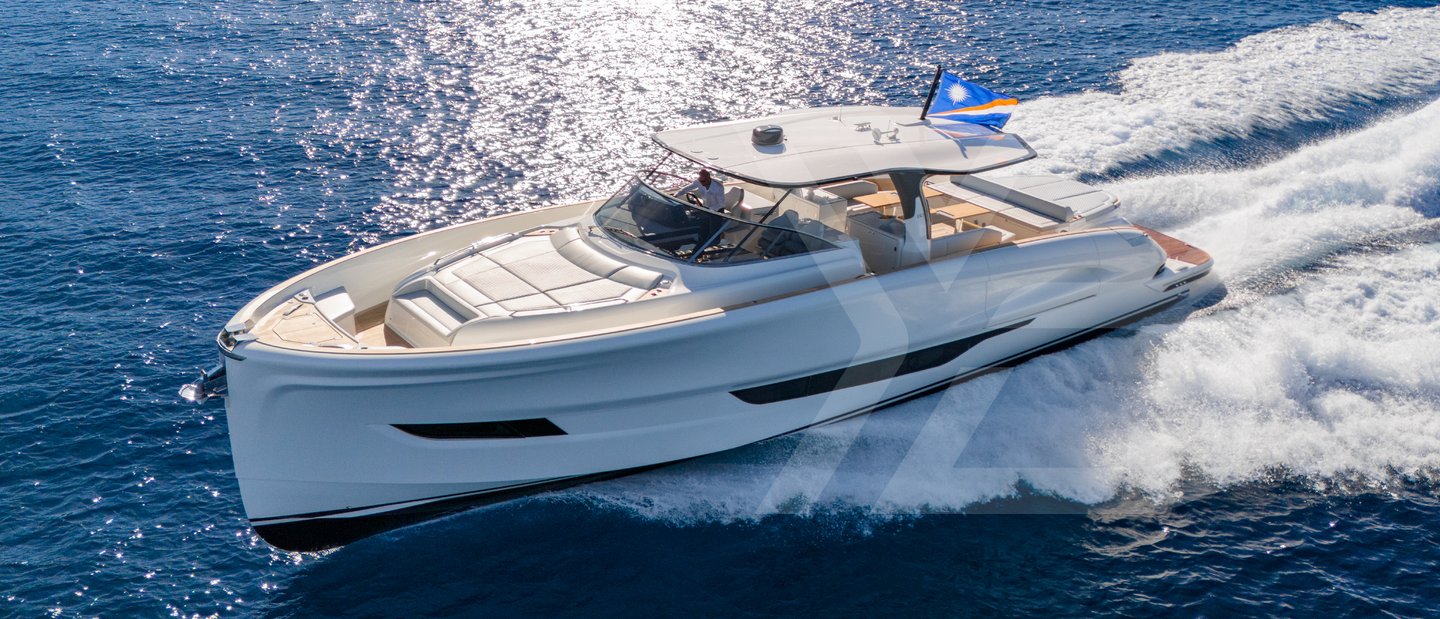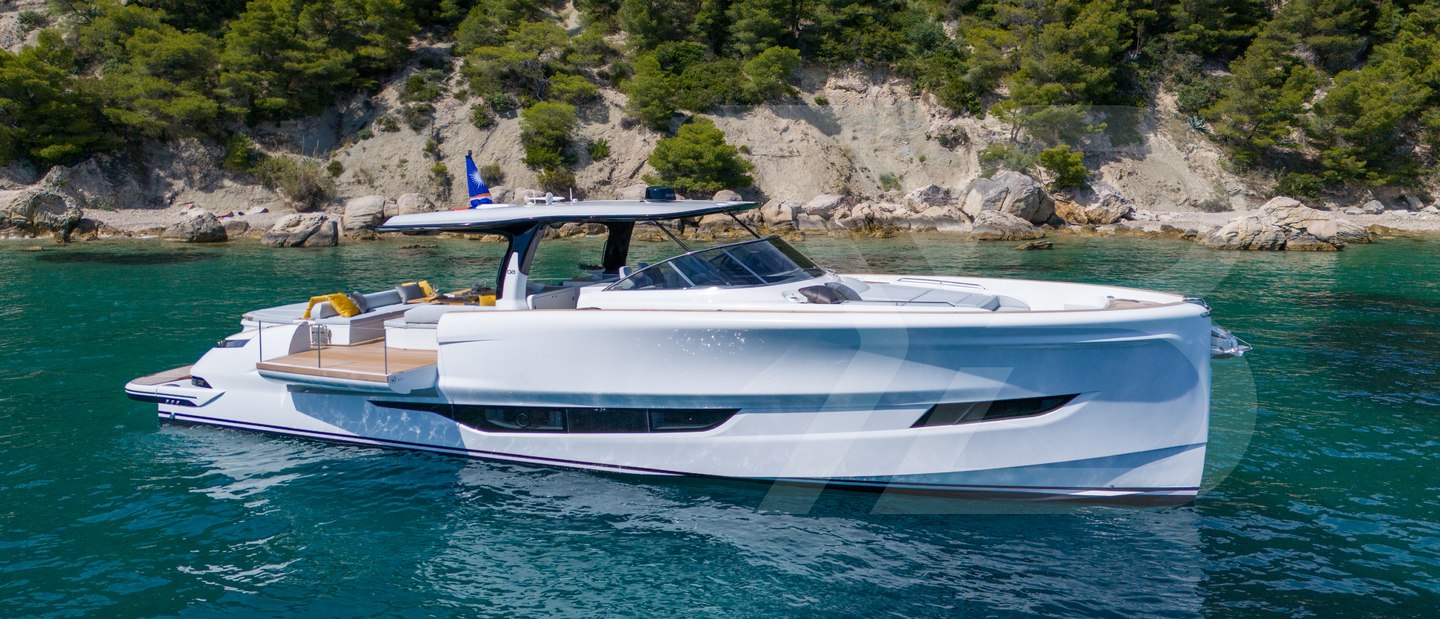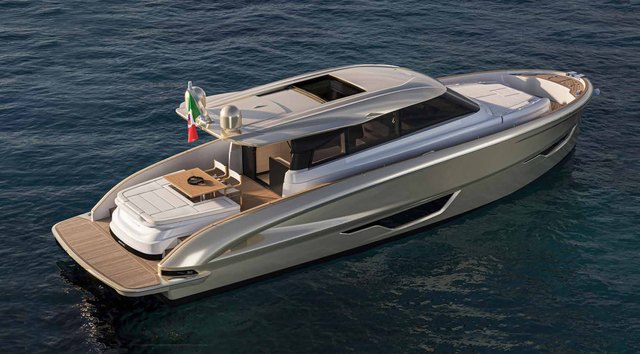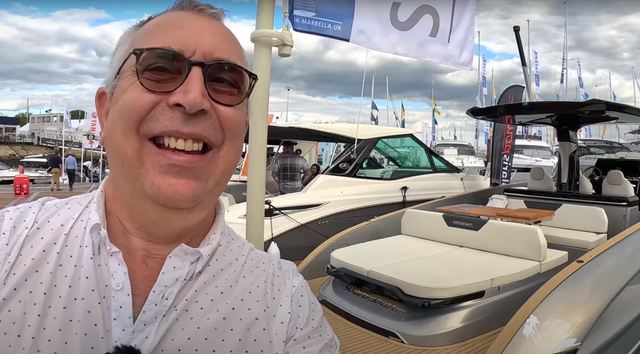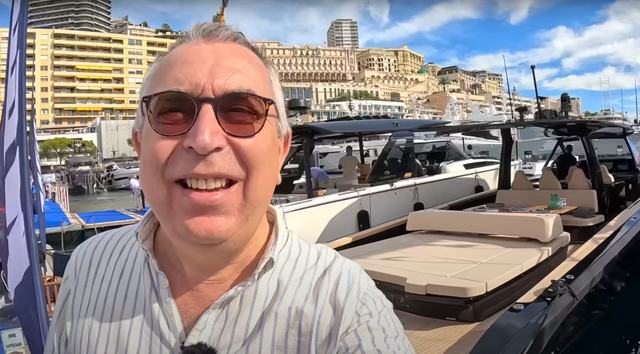In the spotlight at Cannes 2024, the Solaris Power 60 Open has made its big entrance as the brand's newest flagship. This €1,700,000 super dayboat now sits at the top of the glamorous Solaris range.
Like its smaller predecessors, the 60 has lines to die for, but with its high freeboard and flared bow, it ought to be pretty handy if the sea gets lumpy. The 60 has full walkaround decks, a two-, three-, or four-cabin layout, and is powered by twin Volvo Penta IPS800 engines as standard with the option to upgrade to IPS1350 for a combined 2,000hp. Is this the ultimate dayboat?
Solaris 60 Open Key Facts

- LOA 18.29m
- Model Year 2024
- Cabins 3
- Crew 1
- Max Speed 40 knots
- Status In Production
- Yacht Type Sportsboat
- Use Type Cruising
Test & Review Video
Around the Marina
Being IPS only, joystick control comes as standard whichever engines you opt for. With the grunt of the optional IPS1350s, the boat reacts well to inputs from the joystick but the addition of the bow thruster is always handy for small tweaks to keep the bow in check.
The open design means the sightlines are excellent, too, so whether you're berthing stern-to or alongside it's very easy to do so from the helm. There is only one helm and no option to have a second control station but you don't need it because it's so easy to communicate with the crew and help out with crewing tasks as the skipper.
Crewing is easy, too. The walkaround decks lend themselves to safe passage and though there are no guardrails — the tall bulwarks offer plenty of protection. No guardrails means nowhere to hang fenders so they're attached to pins, which plug into sockets atop the bulwarks. This method makes it quick to hang and remove them, but it's less easy to adjust their height and they can only be mounted at fixed points along the deck, which may not suit all mooring environments. The fenders do all stow in the large anchor, which is handy and means they don't gobble up space elsewhere. In essence, it's an easy boat for a couple of people to handle on their own.

At Sea
I've been fortunate enough to drive smaller models in this range, and even they feel remarkably solid given the style of boat they are. The 60 is on an entirely different level, though. It's got such a wonderful freeboard and a flared bow that dispenses spray with ease. It was a choppy, windy evening when we tested the boat, and not a slick of spray landed on that retro windscreen.
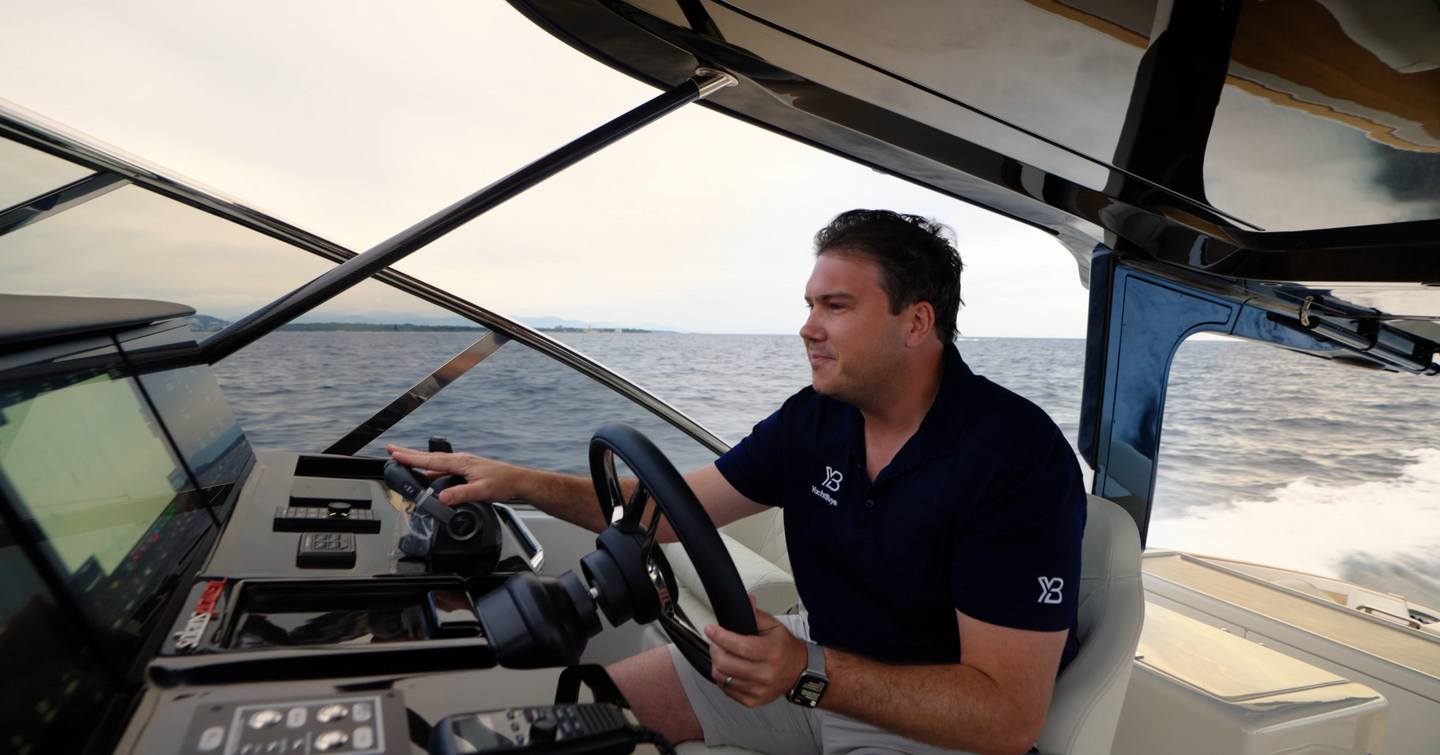
This boat goes about its business at speed with effortless ease and just gobbles up the miles with the nonchalant grace of a V8 Bentley. It's designed to soak up fast distances and it does so with real panache. It's an easy boat to drive at slow and higher speeds, with the suite of Volvo electronics doing the hard work while the person at the helm just has to set the speed.
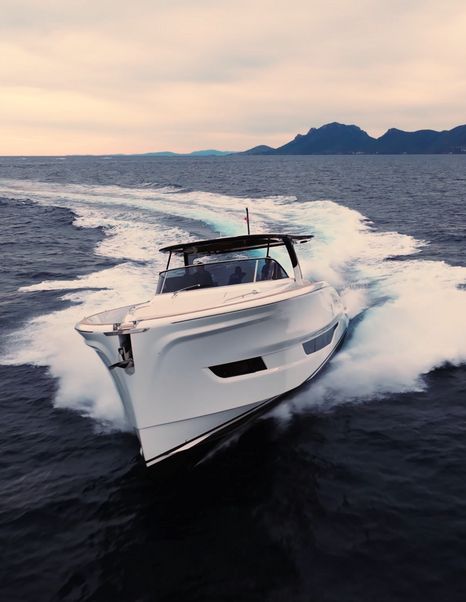

Its cruising performance is versatile because realistically you can cruise anywhere between 20 and 35 knots and there's no real drop-off in consumption and range. Cruising at 30 knots you'll comfortably cover 350nm. Drift along at 10 knots with the Seakeeper limiting roll and that range almost doubles. See the table below for a full set of performance figures.

The handling is light and easy even if it lacks real tenacity. This is no sportsboat, it's a GT cruiser designed to waft from berth to bay and back again and it's very, very good at it.
Any issues? The curved windscreen looks the business but it doesn't do a great job of deflecting the breeze over the heads of those sitting in the four helm seats. I'll go into more detail about the driving environment in the Helm Station section below.
The Solaris 60 Open, designed by Victory Design alongside the Solaris Power division and with interiors by Roseo Design, is an effortless, wafty GT cruiser. It promises swift journeys between 20 and 38 knots, so you'll be the first to the anchorage, ready to enjoy its open deck spaces.



Flare, Form & Function
Currently, boat design tends to lean towards the more angular and modern, but the Solaris 60 Open is different with soft, curvy lines. Inspired by Ferretti's old Mochi range, it carries a classic sports car feel, with truly lovely details. The matte wood effect, teak detailing, and wooden panels deliver a retro feel but the boat rings with high-quality craftsmanship.
The broad flared bow gives it an impressive freeboard, which delivers more space on deck and below in the large forward cabin. The wide deck features two massive sun pads, fore, and aft, and the amidships fold-out bulwark balconies boost deck space by 20%. Walk-around decks and a central corridor, clear of any fixtures, give easy movement, and the solidity throughout the boat is palpable. Teak feels rock-solid underfoot, and integrated railings are beautifully connected to their mouldings. Even the servery area’s opening lids and doors feel high quality.
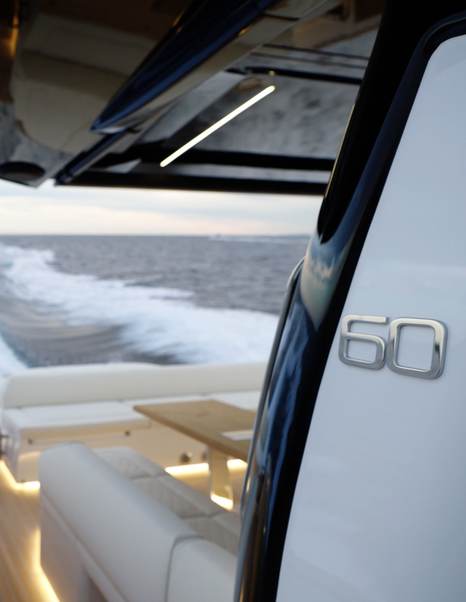


On the main deck, you can choose between a merged C-shaped seating area with an additional table, or maintain the central walkway for smoother movement. Below the deck, the three-cabin layout includes a cosy seating area that can change into a fourth cabin. Alternatively, a two-cabin layout that loses the partition between the twin and double cabins combines into a full-beam owner's suite: a good option if you don't need a lot of people on board all the time.


Engine Room
The engine access is through a well-positioned hatch in the cockpit; descend a ladder and you'll find yourself right above the Seakeeper, next to the stainless steel fuel tanks. These tanks have sight gauges to assess fuel quality easily. There are also dual fuel filters, so if one becomes blocked, you can easily switch to the other.


Despite the tender garage intruding a bit from above, the space between the engines is cleverly used. You can move between them easily enough, and access to the pods and strainers at the rear is good. The port side has a generator, which is also easy to reach. The insulation is top-notch, keeping things nice and quiet out on the water.
On the lower deck, there are a few options to consider. The three-cabin layout has a nice seating area; its main function appears to be to serve the coffee machine - a must on any Italian boat worth its salt. Alternatives include adding another bathroom or even a fourth cabin. However, opting for four cabins might feel a bit cramped, so the three-cabin setup seems like a well-considered compromise.
Leading to the guest cabins is a passageway with a day head, which the two guest cabins share. To starboard, a twin cabin, and to port, a double cabin - both covering a similar footprint.



Forward, you'll find the full-beam owner's cabin; due to its location in the flared bow, it has plenty of headroom and floor space. In this setup, it's the owner's cabin, but in a two-cabin arrangement, it would be the VIP suite. The headroom here is impressive, something you wouldn't find in an amidships master. There's lots of storage, with hanging lockers on either side - though you will sacrifice these if you go for the amidship owner cabin, as it would become an ensuite for the other cabin. This cabin's ensuite is big enough to hold a separate shower cubicle.
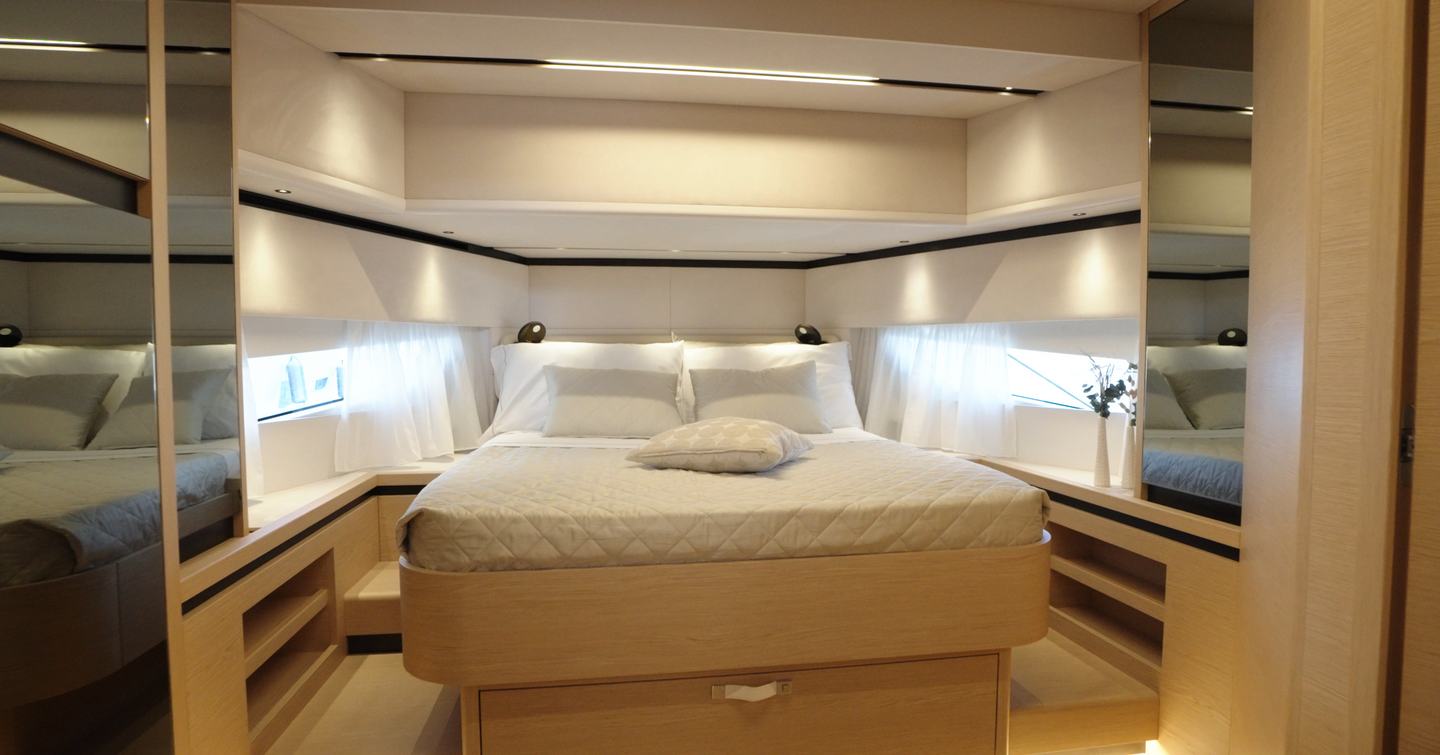
Crew Space
Access is by lifting the cockpit seating but the crew cabin's inclusion is a bit of a puzzle. On a yacht like this, a dedicated crew cabin is not needed and the idea of someone bunking down here is, to put it mildly, quite ridiculous.


There's a pop-out bed from the wall — interesting, but not very practical as it fills the entire space when down. Storage slots are both above and below, and there's a toilet as well. It's crying out to be a huge lazarette instead. While the design is quite clever, the practicality for crew accommodation leaves a bit to be desired. The reality is, that you'd probably be better off using this space for storage and keeping the sleeping arrangements elsewhere.
The helm station is one of the 60's standout features. A big, relaxed cruiser like this needs a place where passengers can enjoy the ride and the four helm seats do just that. They're all fully adjustable so can be tweaked for different shapes and sizes and sit beneath the curved windscreen for a reasonable amount of protection. The helm is enclosed on the outboard ends, though, so those on the outside can't escape without moving the people in the inboard seats.



The dash arrangement is pretty faultless except for the placement of controls behind the throttles. This means you have to reach over the sensitive Volvo throttle arms to reach them and risk knocking them when the boat is on the move - not ideal. These controls would be better on the upright section of the dash adjacent to the steering wheel.
That aside, information is beautifully presented across the suite of triple Garmin MFDs and a smattering of classy buttons across the lower dash. In line with the boat's whole ethos, it's an easy spot to sit back, relax, and soak up the miles.
At the stern, you'll find a hydraulic bathing platform paired with a hydraulic passerelle, connecting to a tender garage big enough to hold a Williams Minijet 280. Mooring gear, including cleats and fairleads, is stowed under the capping when not in use.

A good feature on the aft sunpad is the adjustable backs on a ratchet mechanism which feels and sounds solid. There are also deep cup holders and pop-up lights for ambient lighting after dark.
Amidships, the opening balconies are a few feet above the waterline and connect with the seating area. The seat backs can be moved to face outwards or inwards and they're just perfect for soaking in the scenery or diving into some water sports.
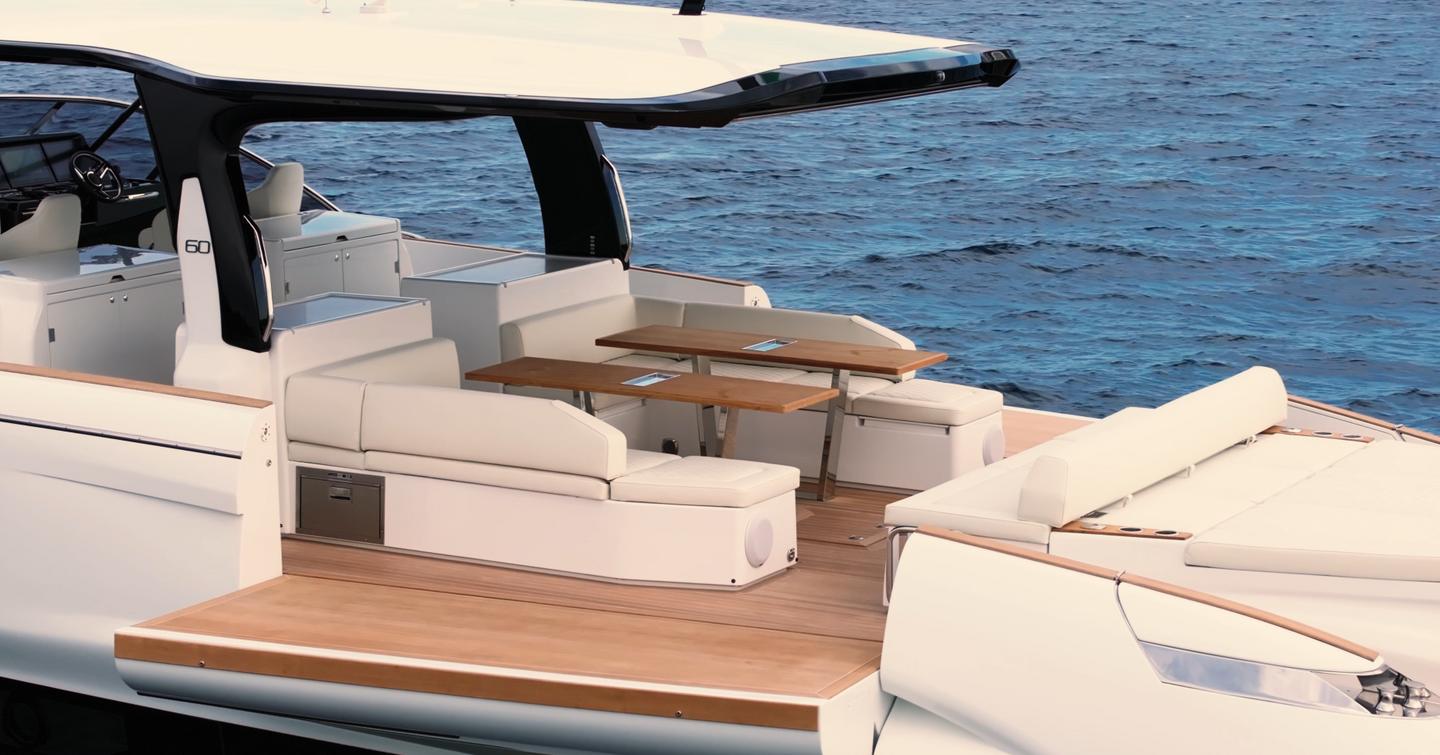
Seating arrangements are around two split tables that create a central passageway right through to the helm station. Inset trays on the tables are a smart addition, stopping items like phones from sliding off while underway.
Despite being an open yacht designed for Mediterranean climates, protection hasn’t been overlooked. A substantial hardtop overhead gives shade, and an optional sun shade slides out to cover the sun pad at the press of a button.
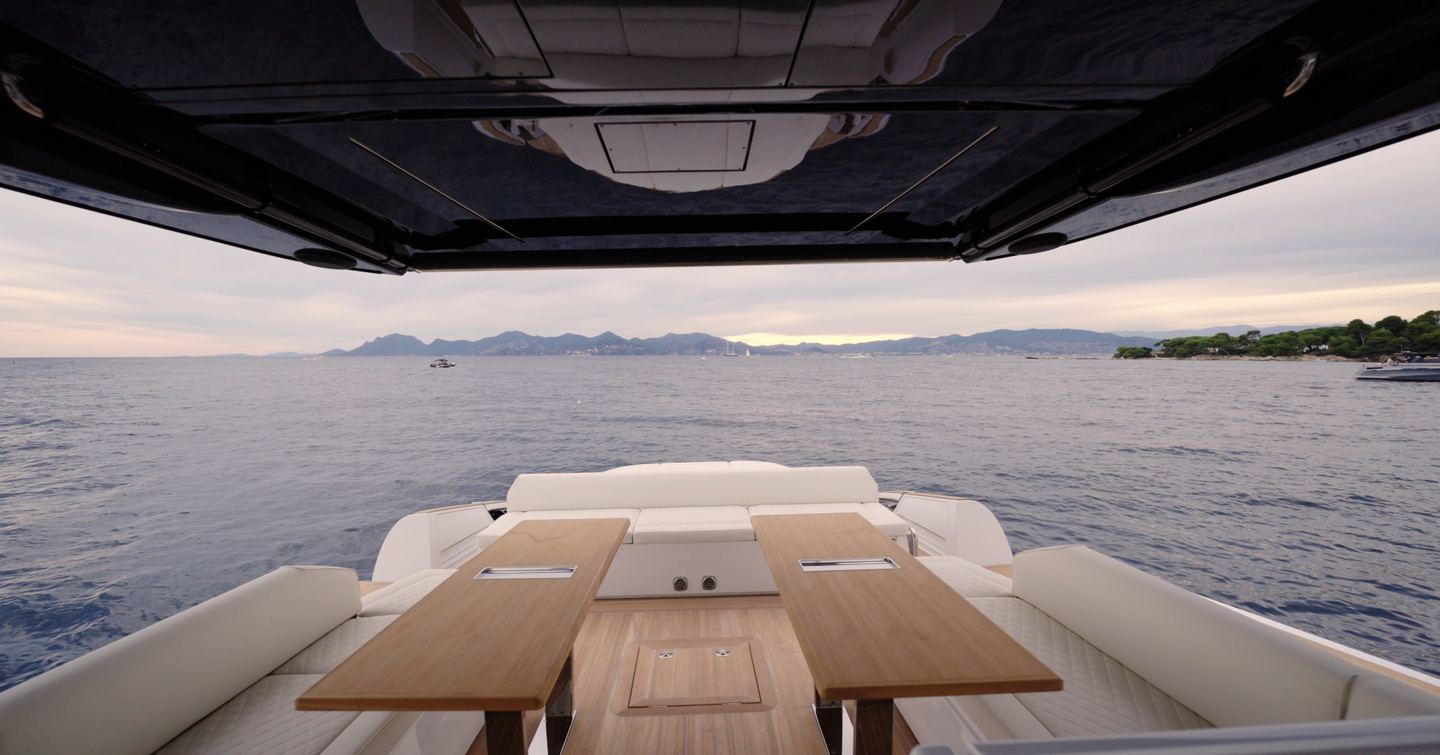
Forward, there's a serving area, and custom storage for crockery and cutlery meaning everything has its place. The serveries feature a sink and grill on either side of the walkway, finished in nice, soft-touch, high-quality materials. Above, a pop-down TV lowers from the hardtop, facing toward the cockpit and disappearing completely when not in use.


Side Decks & Foredeck
Looking along the bow forward marches you back in time to a '60s Corvette with its curved windscreen, and the teak running right to the bow is very Chris Craft. The design decision not to carry conventional railings around the outside preserves the yacht's lines; there are fitted railings along the coach roof. As fenders can't be hung from railings, plug sockets are dotted along the deck and then stowed away in the anchor locker when not in use.

The sun pad is a good size with loads of space to lie back and drink it all in. With a built-in sofa at the front and opposite bench seats, it's a sociable space, perfect for gatherings or watching the world drift by at slower speeds. The anchor winch hides beneath teak panels at the fore to maintain those clean lines, while pop-up cleats and a winch that tucks away when not in use help with Mediterranean stern-to mooring.
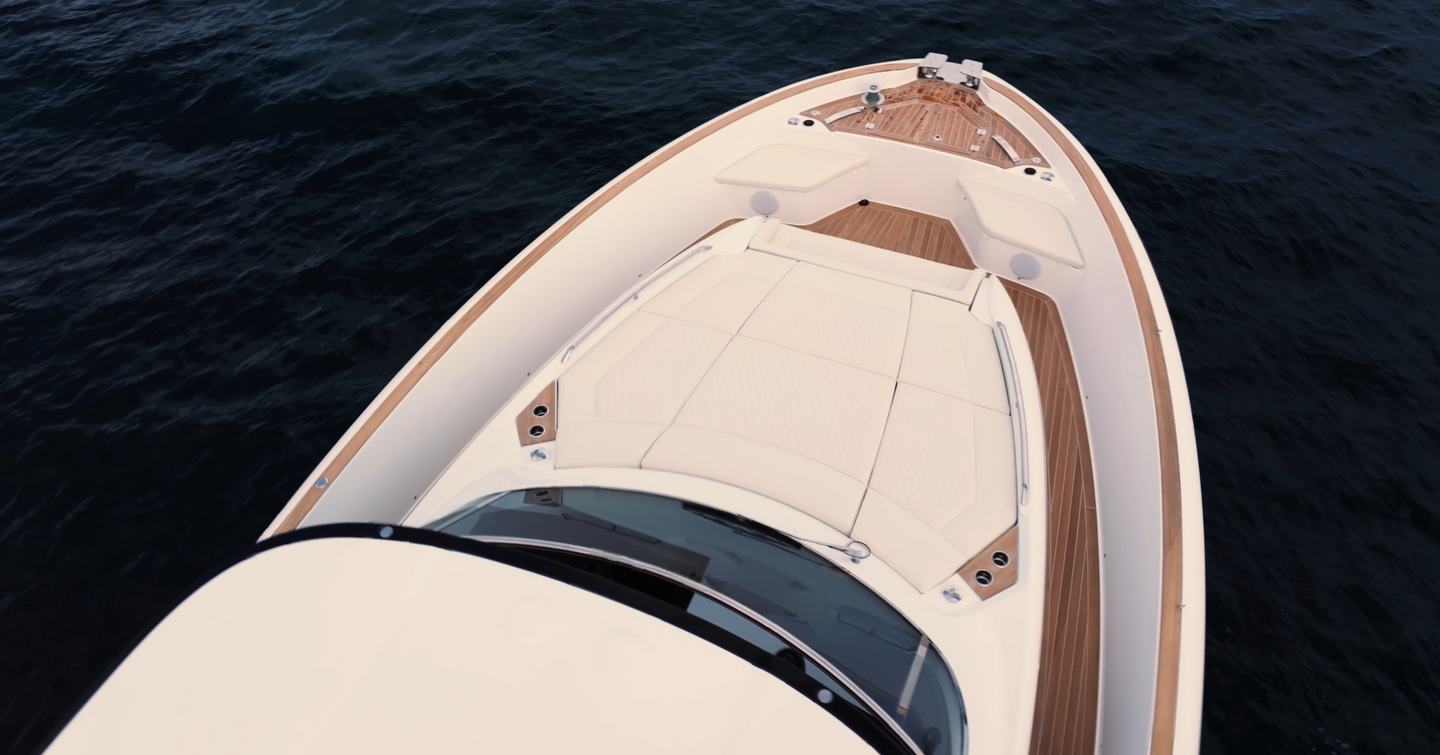
Pricing for the Solaris 60 Open starts at €1,698,000 ex VAT when equipped with the standard IPS800 (600hp) engines.
Our Options & Pick
The test boat we looked at featured a host of optional extras that nudged the price to €2,507,000 ex VAT. Among the most significant upgrades are the Volvo Penta IPS1350 engines, adding €325,000 to the base price. The test boat also included a Seakeeper stabiliser, cockpit balconies and a hydraulic passerelle, a tender lift and launch system, the crew cabin, air conditioning, and an 18kW generator.
Most of those extras are necessary but the crew cabin could definitely be left off that list and kept as the standard (and very large) lazarette storage area.
Our Verdict
Elegance defines the Solaris 60 Open — it’s a bit like a Bentley of the sea, with a presence and craftsmanship that exudes class. This yacht does, however, balance sophistication with performance, and has the ability to take you on a comfortable journey over long distances. Despite the compromised crew cabin, the Solaris 60 Open stands tall in this sector; right up there at the top of its class.
Reasons to Buy
- Beautiful design
- Great driving position
- Walkaround side decks & opening balconies
- Spacious accommodation
- 40-knot performance
Things to Consider
- Pointless crew cabin
- Limited headroom in engine room
Looking to own a Solaris 60 Open? Use YachtBuyer’s Market Watch to compare all new and used Solaris 60 Open Boats for sale worldwide. You can also order a new Solaris 60 Open, customized to your exact specifications, with options for engine choice and layout configuration. Alternatively, explore our global listings of new and used boats for sale and find your perfect boat today!
Rivals to Consider
The Solaris 60 Open certainly makes a statement, but what about the rivals in the same class?
With a three-cabin layout accommodating up to six guests, the 60 OPen rivals its smaller sibling, the Solaris Power 52 Open. While both yachts cater to those who enjoy hosting family and friends, the 60 Open's master cabin, complete with an en-suite and hull side windows, adds a touch of luxury that's hard to beat. Although the 52 Open tops out at 35 knots, slightly slower than its larger counterpart, it remains an option if you are seeking a compact, spacious vessel.
Turning our gaze towards the Vanquish Yachts VQ58 T-Top, this rival offers a different proposition. Designed for four guests in two cabins, it doesn't match the Solaris 60 Open's capacity but brings an intriguing feature with its shallow draft. This allows it to navigate waters that might challenge deeper vessels like the Solaris. Perfect for shorter trips or quick getaways, the VQ58 T-Top combines comfort with style, offering a more intimate experience.
The Wally wallypower58 also is on offer, focusing on performance and efficiency. Accommodating four guests, similar to the Vanquish, it cruises at a brisk 32 knots. While it lacks the guest capacity of the Solaris 60 Open, it appeals to those who aren't fussed about larger gatherings and instead prefer a more modern-looking angular, performance-driven vessel.
For thrill-seekers, the Windy Boats SLR/SR60 sets a benchmark in performance. Its top performance, powered by three 510hp Volvo Penta IPS650 engines, delivers a top speed of 44 knots. While the Solaris 60 Open can't quite match this burst of power, it offers a different experience focused on stability and comfort.
Considering a new boat? Explore Solaris Power's entire current range to find the model that best suits your needs, and compare it with alternatives from competitors to ensure you make the perfect choice.
Specifications & Performance
- Builder Solaris Power
- Range Open
- Model 60 Open
- Length Overall 18.29m
- Beam 5.35m
- Draft(full load) 0.85m
- Hull GRP
- Cabins 3
- Berths 6
- Crew 1
- Yacht Type (Primary) Sportsboat
- Use Type (Primary) Cruising
- Cruising Speed
- Max Speed
- Fuel Capacity 3,000 Litres
- Fresh Water Capacity 600 Litres
- Engine Model 2x Volvo Penta D13-IPS1350
Performance Data
Solaris 60 Open version 2024. *Data supplied by the manufacturer.
Test Engines Twin Volvo Penta D13-IPS1350
- RPM
- Knots
- Liters Per Hour
- Liters Per Mile
- Range (nm)
- Decibels
-
- 600
- 6.9
- 12
- 2
- 1,586
- -
-
- ECO
- 978
- 10.5
- 49
- 5
- 613
- -
-
- 1,307
- 13.9
- 101
- 7
- 394
- -
-
- 1,502
- 18.4
- 133
- 7
- 393
- -
-
- 1,795
- 25.2
- 190
- 8
- 378
- -
-
- 1,990
- 29.6
- 231
- 8
- 366
- -
-
- CRUISE
- 2,096
- 31.9
- 255
- 8
- 356
- -
-
- 2,201
- 34.2
- 283
- 8
- 345
- -
-
- 2,299
- 36.3
- 308
- 8
- 336
- -
-
- 2,398
- 38.5
- 339
- 9
- 324
- -
-
- MAX
- 2,470
- 40
- 365
- 9
- 313
- -
Interested in a 60 Open?
NEW Build
Find your local dealer for a personalised, no-cost consultation
or just request
Brochures & Pricing
Used & In Stock
Looking for a ready-to-go 60 Open or pre-owned options? Explore all inventory of the 60 Open available worldwide

